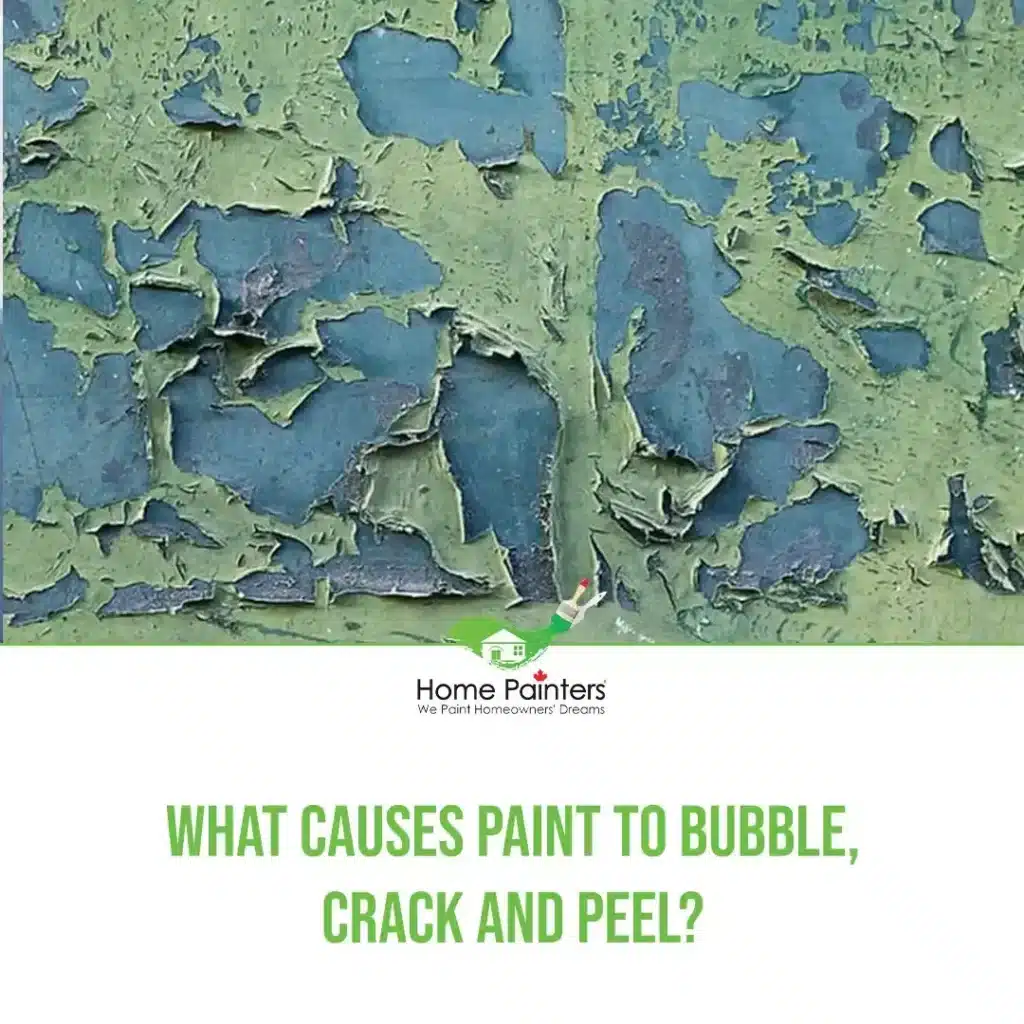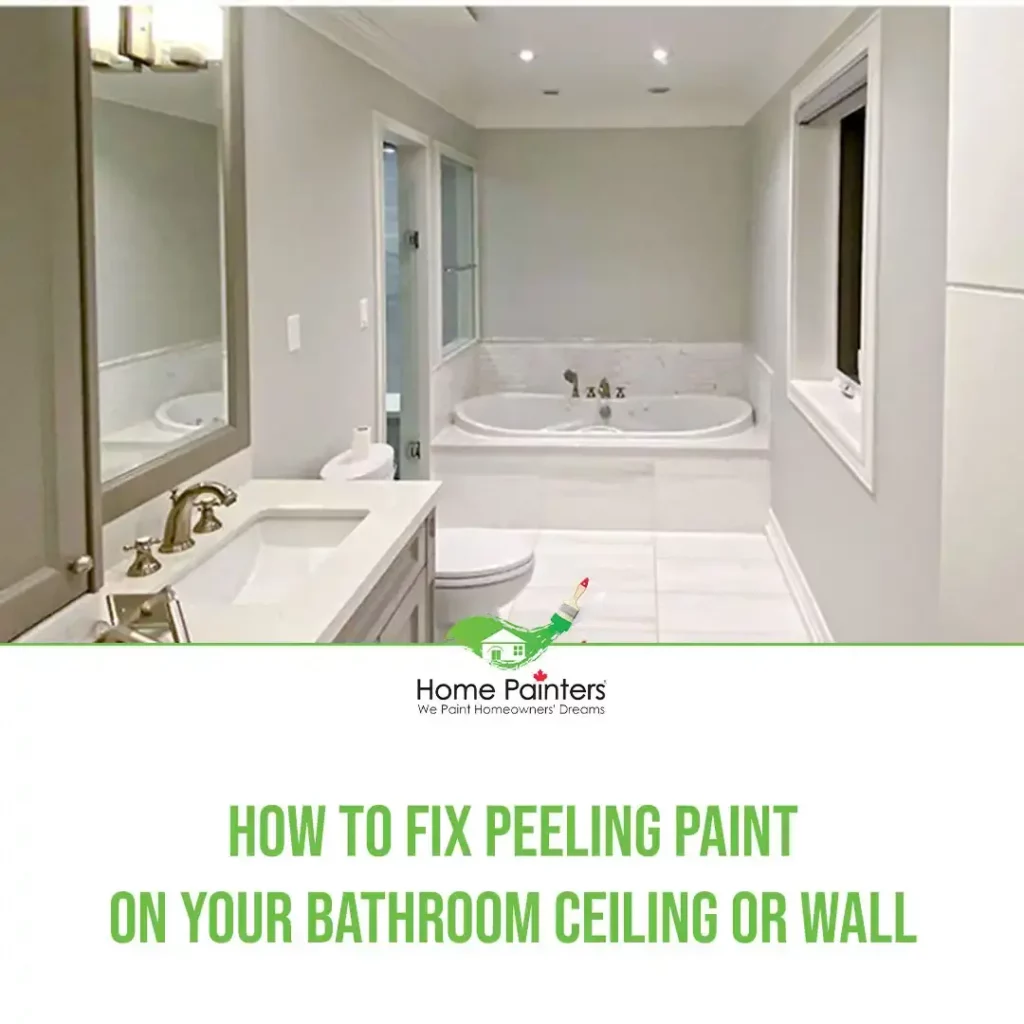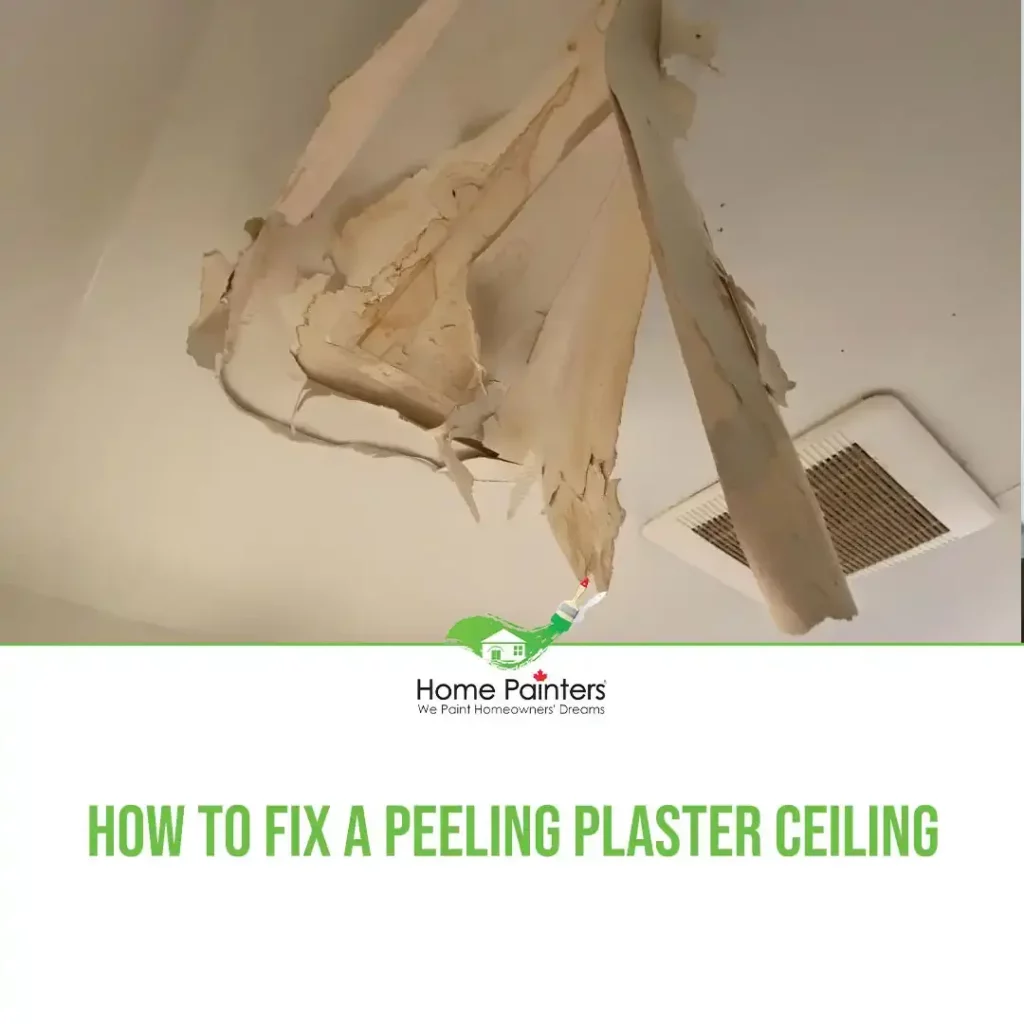Fresh paint peeling off walls? It happens all the time, and it’s not just because you didn’t let the paint dry long enough. There are a number of reasons why fresh paint peels off walls. And that’s what we’re going to talk about in this article. We’ll discuss the various reasons why fresh paint peels off walls, as well as what you can do about it.

Peeling paint off the walls can look unattractive and dull. Plus, it just kind of bums you out to see your hard painting work go to waste! Peeling paint can be done outside of the building or the interior of the house. In both forms, peeling paint significantly can make the look of your house seem unkempt.
If peeling paint happens inside the house then it can even reason medical problems for the inhabitants. Falling paint chips can be hurtful in the event that they land in your eyes and taking in paint residue can disturb your lungs. This can be a serious problem and may affect health drastically.
Usually, paint can start to peel immediately after applying it to the wall or after some years. It depends on the situation of the wall before and also depends on the contractor.
Top 5 Reasons Why Fresh Paint Peels Off Walls
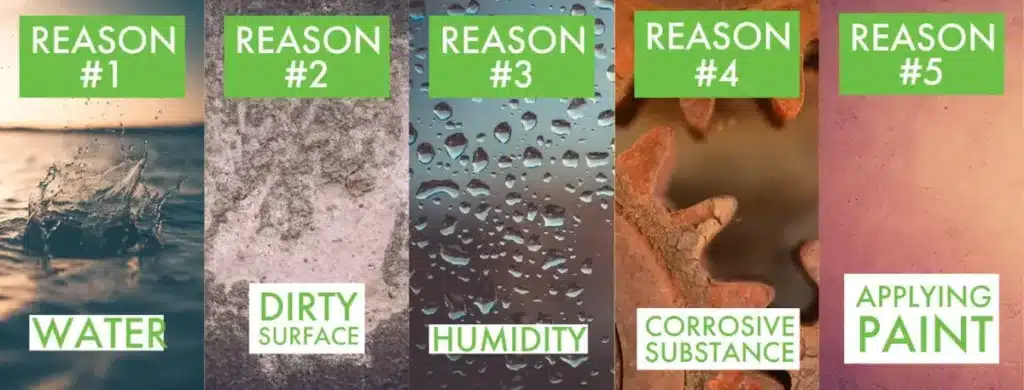
1. Water
2. Poor Surface Preparation / Dirty Surface
3. High Humidity
4. Corrosive Substance
5. Appling Paint Not Suitable For Surface
Reason #1 – Water
Water causes damage to a freshly painted wall when the surface is exposed to a lot of water over time. Or perhaps there is water finding the wall from within as well. In detail, when water enters through the coats of paint it will detach it from the surface. That’s the reason why cracking and peeling occur.
Sometimes water can be leaking from the roof or gutter from above. This must be prevented in the initial stage. Because this can be a serious problem not only for paint but your health as well. When water gets deep into the surface of your home, mould and mildew can form. This is where it can lead to long-lasting effects on your home as well as your health.
Reason #2 – Poor Surface Prep / Dirty Surface
Before starting your interior painting, make sure the surface on which the paint will be applied is cleaned properly. If the paint is applied on an uneven surface it will start peeling off quickly.
The paint does not bind the dirty surface. Dirt, oil, and other agents prevent the surface from painting on wood, metallic, and even concrete. If the paint is applied on a surface which is extremely dirty then it will result in crake and peeling immediately after applying it. So, make sure to wipe down the surface before applying a fresh coat of paint.
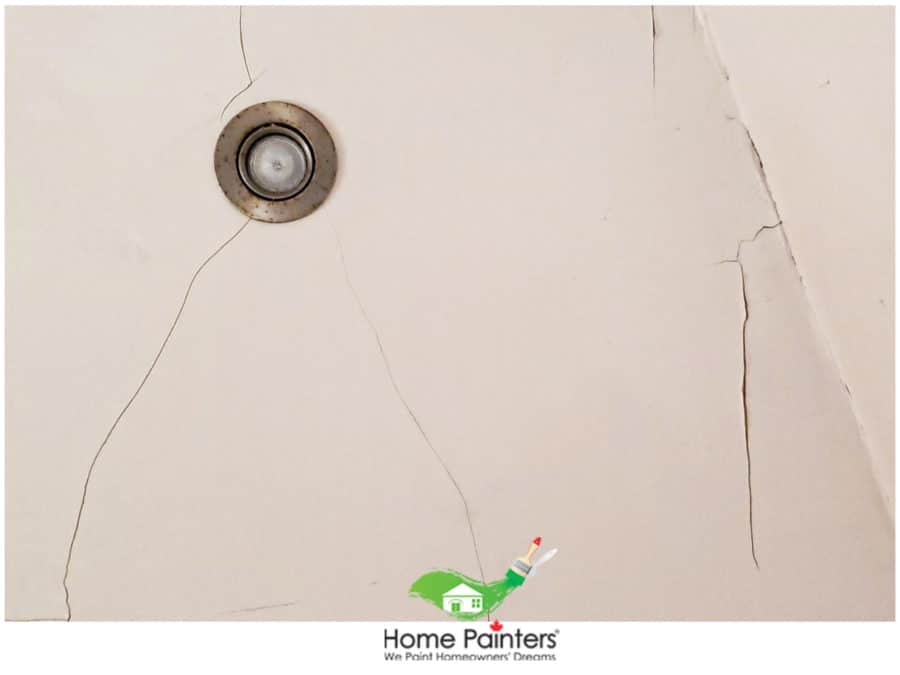
Reason #3 – High Humidity
When your walls are in direct contact with a highly humid environment or excessive condensation. These are the two biggest reasons for fresh paint peeling off walls.
In poorly ventilated buildings moisture doesn’t go away quickly. As a result, moisture will stick to the walls and leads to the bulging of the coatings.
On the other hand, condensation leads to dampness. That condensation and dampness can lead to mould and mildew. This usually happens after a rainy season.
Reason #4 – Corrosive Substance
There are numerous substances that can erode a painted surface.
In the event that a destructive substance comes into contact with a painted surface, it makes the coat rankle, break, and lastly strip off. Destructive substances for the most part contain a solid corrosive or base.
This is the reason you ought not to perfect the dividers of your home with dye or another exceptionally acidic item. Make a point to weaken it so it doesn’t demolish the paint.
Reason #5 – Applying Paint Which is Not Suitable for Surface
Like other chemicals, paint is expired at certain times. So, before purchasing paint or applying it on the wall will make sure you have the correct paint.
On top of that, there are many types of different paints available on the market. So, how to choose the correct paint is the biggest question when you start your painting by yourself. You should know the basics of paint like the difference between Oil-based and Latex paint. It will helpful for you to decide which paint goes on which type of walls.
We know the top five reasons why peeling fresh paint off occurs. NOW, It’s time to prevent your walls at home.
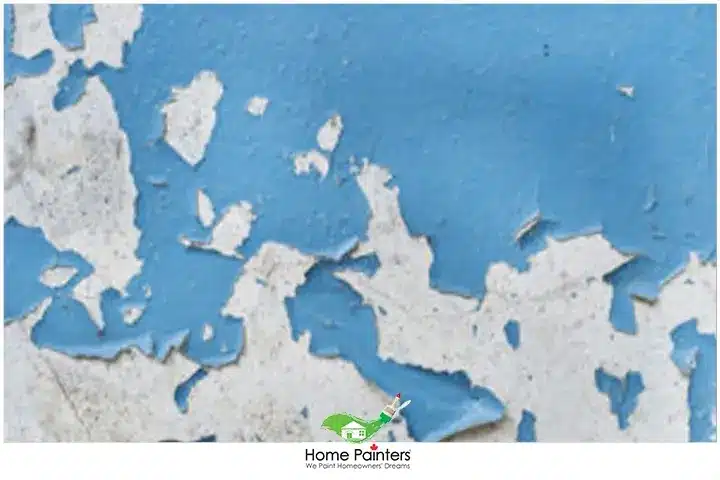
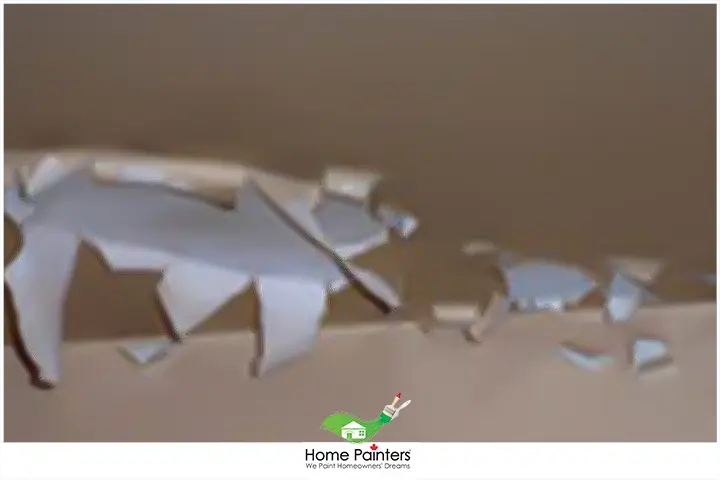
How to Fix Peeling Paint and Prevent Walls from Chipping Again
When you notice that your walls are starting to peel, it’s important to know how to fix the problem, as soon as possible! If you don’t take care of it, the problem will only get worse and your walls will look even worse than they did before. Here are a few steps on how to repair peeling paint on plaster walls:
3 Steps to Prevent Peeling Fresh Paint Off
Here we are discussing 3 steps to prevent/stop peeling fresh paint off the walls. Which is more helpful before you even start painting!
Step #1 – Get Rid of Peeling
Before you begin to paint it’s a great idea to check any leaky roof or any plumbing work. Because these reasons cause more peeling of paint. So, check out the surroundings and situations.
After this, you may adjust the drop cloth on the floor and wear all personal protective equipment. Gear up with goggles and a face mask. The reason for this is that tiny flakes of paint are sure to go flying. Then using a paint scraper, wire brush, or putty knife—carefully remove all the chipped or peeling paint from the walls and ceiling.
Step #2 – Preparation of Surface
Utilizing a clay blade, apply brisk setting fixing compound in a flimsy, even layer to fill any splits or openings. Let dry completely, rehash on the off chance that essential and afterward permit to dry for the time being.
Next, sand the territory until it’s smooth and mixes in with the remainder of the divider. Utilize fine coarseness sandpaper or for simple cleanup, a shop vac with a sander connection. Feel with your fingers for any edges or lopsided spots you may have missed.
At last, clean the region with a moist wipe, wipe again with dry material, and let dry totally. (Keep in mind: You don’t need any waiting dampness when you start to prime and paint.)
Step #3 – Repaint Patches
When the preliminary is dry, you’re prepared to repaint. On the off chance that you have enough paint leftover from the first painting session, that works great. If not, check whether you can buy a small sample can.
Utilize a fibre or wipe brush (or a roller for enormous zones), beginning inside the fixed regions and feathering outward. Decide in favour of closefisted. You never need to glop the paint on, and that is particularly significant with repair work.
Let dry, and hold up for 24 hours before utilizing the shower in this washroom.
Top Tip From Pro Painters
If you’re going down the route of DIY interior painting, there’s one crucial thing to remember that will always make a positive impact. When you’re painting indoors, be sure to turn down the thermostat! It seems so simple, right? Yet, most people love to keep their homes above 75 degrees Celsius. Especially if you’ve had issues with paint that peels, try and keep the space below 50% humidity.
Humidity and high moisture can be paint’s worst enemy. Open a window and get some good cross-ventilation going as well. We promise it will only help!
To prevent walls from chipping again after they’re painted, make sure to use high-quality paint and primer. While it might be tempting to go with the cheapest option available, it will only lead to more problems down the road.
More Blogs Related to
“Why Fresh Paint Peels Off Walls “
Have you learned a lot about why fresh paint peels off walls? Ensure you have the time to execute your home painting needs yourself? Our team of professional painters has over 35 years of experience in the business. Call 416.494.9095 or email [email protected] for a FREE quote. And don’t forget to follow us on our social media channels below!


